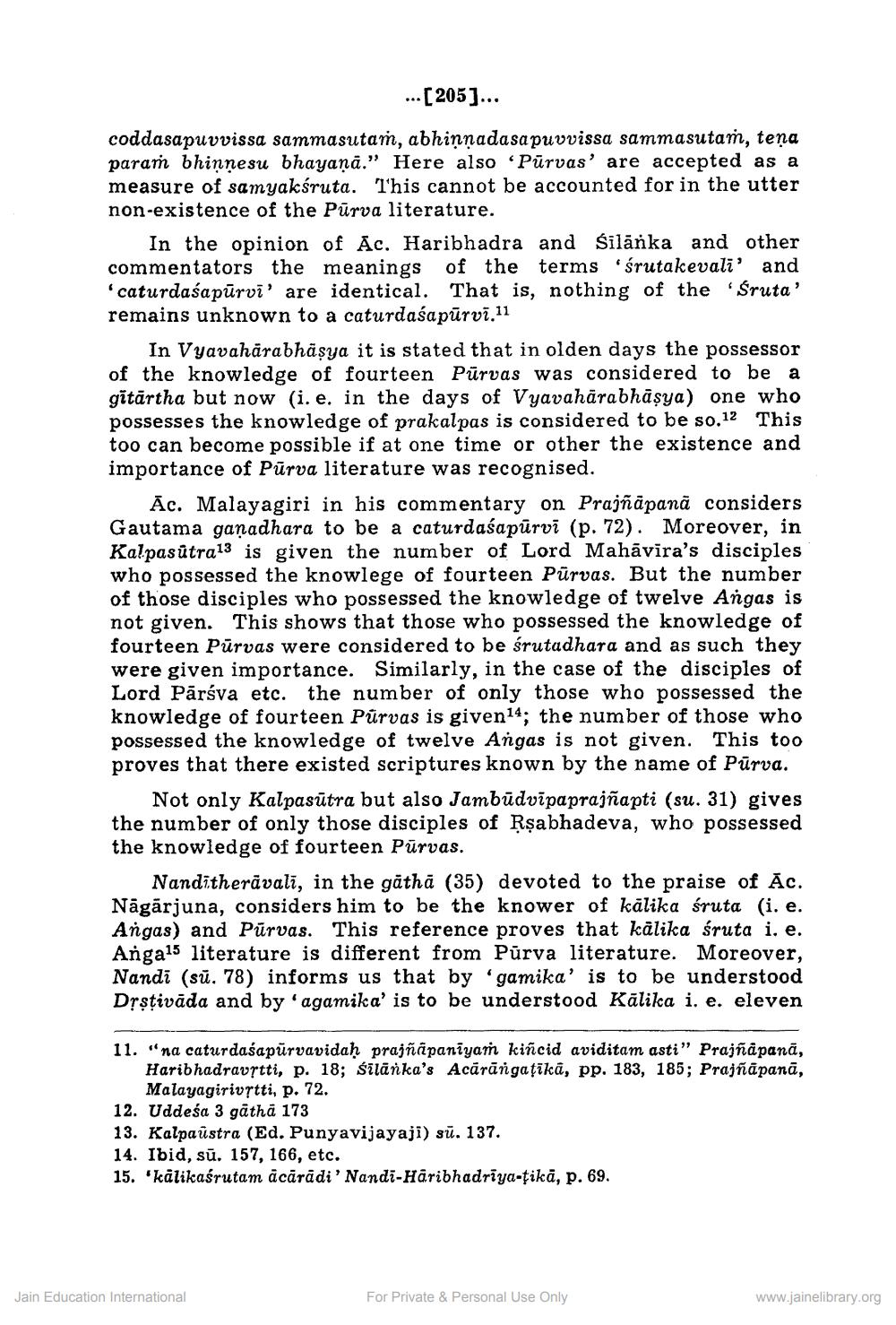________________
... [205]...
coddasapuvvissa sammasutań, abhinnadasa puvvissa sammasutam, tena param bhinnesu bhayaņā.” Here also 'Purvas' are accepted as a measure of samyakśruta. This cannot be accounted for in the utter non-existence of the Pūrva literature.
In the opinion of Ac. Haribhadra and Silānka and other commentators the meanings of the terms 'śrutakevalī' and 'caturdaśapūrvi' are identical. That is, nothing of the 'Śruta' remains unknown to a caturdaśapūrvī.11
In Vyavahārabhāsya it is stated that in olden days the possessor of the knowledge of fourteen Pūrvas was considered to be a gītārtha but now (i. e. in the days of Vyavahārabhāsya) one who possesses the knowledge of prakalpas is considered to be so.12 This too can become possible if at one time or other the existence and importance of Pūrva literature was recognised.
Ac. Malayagiri in his commentary on Prajñāpanā considers Gautama ganadhara to be a caturdaśapūrvi (p. 72). Moreover, in Kalpasūtra13 is given the number of Lord Mahāvira's disciples who possessed the knowlege of fourteen Pūrvas. But the number of those disciples who possessed the knowledge of twelve Angas is not given. This shows that those who possessed the knowledge of fourteen Pūrvas were considered to be śrutadhara and as such they were given importance. Similarly, in the case of the disciples of Lord Pārśva etc. the number of only those who possessed the knowledge of fourteen Purvas is given 14; the number of those who possessed the knowledge of twelve Angas is not given. This too proves that there existed scriptures known by the name of Pūrva.
Not only Kalpasūtra but also Jambūdvipaprajñapti (su. 31) gives the number of only those disciples of Rşabhadeva, who possessed the knowledge of fourteen Purvas.
Nanditherāvali, in the gathā (35) devoted to the praise of Ac. Nāgārjuna, considers him to be the knower of kālika śruta (i. e. Angas) and Pūrvas. This reference proves that kālika śruta i. e. Anga15 literature is different from Pūrva literature. Moreover, Nandi (sū. 78) informs us that by 'gamika' is to be understood Dșstivāda and by 'agamika' is to be understood Kālika i. e. eleven
11. “ma caturdasapurbatoidah prajĩapan gam kimcid apiditam asti” Prajapamā,
Haribhadravrtti, p. 18; śīlanka's Acārāngaţikā, pp. 183, 185; Prajñāpanā,
Malayagirivstti, p. 72. 12. Uddeśa 3 gātha 173 13. Kalpaustra (Ed. Punyavijayaji) sū. 137. 14. Ibid, sū. 157, 166, etc. 15. "kälikaśrutam ācārādi' Nandi-Haribhadriya-ţikā, p. 69.
Jain Education International
For Private & Personal Use Only
www.jainelibrary.org




